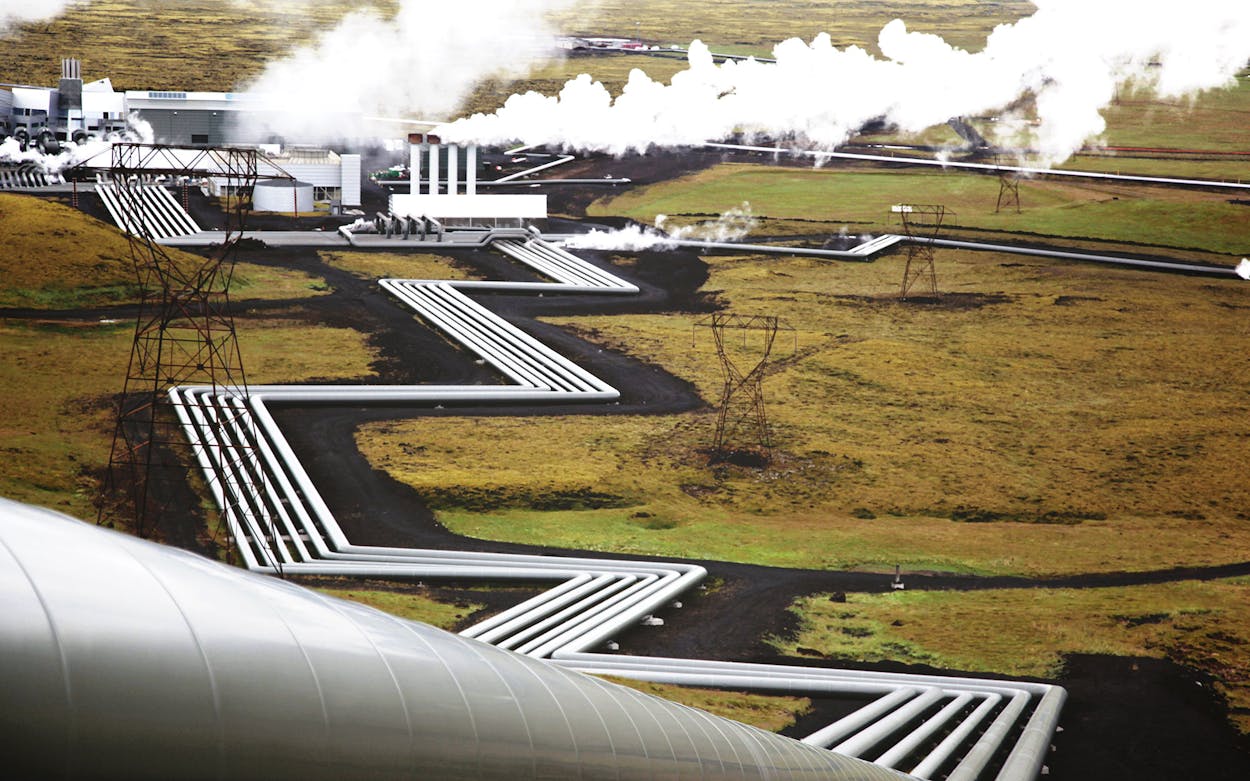Last month, Energy Secretary Rick Perry announced plans to fund research into carbon-capture technology to the tune of $36 million. That’s a not-insignificant amount of money if you’re a scrappy lab seeking grant funding, though it’s still only about 1/871th of the DOE’s annual budget. Nonetheless, Perry has been high on carbon capture as a way to mitigate the atmospheric effects of energy sources like coal and fossil fuels (which he supports to a degree that surprises experts).
It’ll take a lot of research to make carbon capture—that is, technology that scrubs carbon dioxide, or CO2, out of the atmosphere and stores it safely underground—a cost-efficient technology. But observers watching the technology improve should be interested in the latest developments out of Iceland, where the first negative-emission carbon-capture plant in the world recently opened. According to the environmentalist website Grist:
Here’s how direct-air carbon capture works: Giant turbines pull in huge quantities of air, hoovering up molecules of carbon dioxide so we can store it somewhere that’s NOT the atmosphere.
The Icelandic pilot program can remove an estimated 50 metric tons of CO2 from the air in a year. It pumps the collected gas deep into the island’s volcanic bedrock, where it reacts with basalt and essentially turns into limestone. Voilà! No massive reservoirs to manage for millennia—just a lot of rock.
All of that sounds great: limestone is good, carbon in the atmosphere is bad, and a coal plant that doesn’t just run neutral but actually cleans the air as it provides energy sounds like an excellent deal. But there are a couple of hitches in the get-along here: first, direct-air carbon capture is expensive. Experts have expected that it would cost anywhere from $50 to $100 per metric ton of carbon to yank it out of the skies that way. The Iceland project comes in ahead of schedule there, at $30 per metric ton, which suggests that the technology can get cheaper as it gets implemented. The larger issue is that while it makes sense as a part of any diversified energy portfolio—especially one that is going to be using coal and other high-pollution sources—the technology often amounts to a drop in the bucket. The Iceland plant is capable of storing as much as 50 tons of carbon per year in the ground. At that rate, it would need to be joined by another 624,000,000 other carbon-capture plants to reach a neutral position on the amount of carbon we pump into the atmosphere every year.
All of which is to say that while this is promising—and if we’re going to continue to not just employ coal plants, but subsidize their production even when they aren’t actually meeting energy needs, mitigating the damage they do to the environment is a good idea—it’d be a mistake to treat this as a miracle solution to our carbon woes. This is a healthy development, but as promising as it is to learn that it can be done (and at a lower cost than was previously believed), the real lesson to draw here might be that there’s no such thing as a silver bullet when it comes to solving the carbon dilemma.
- More About:
- Energy








